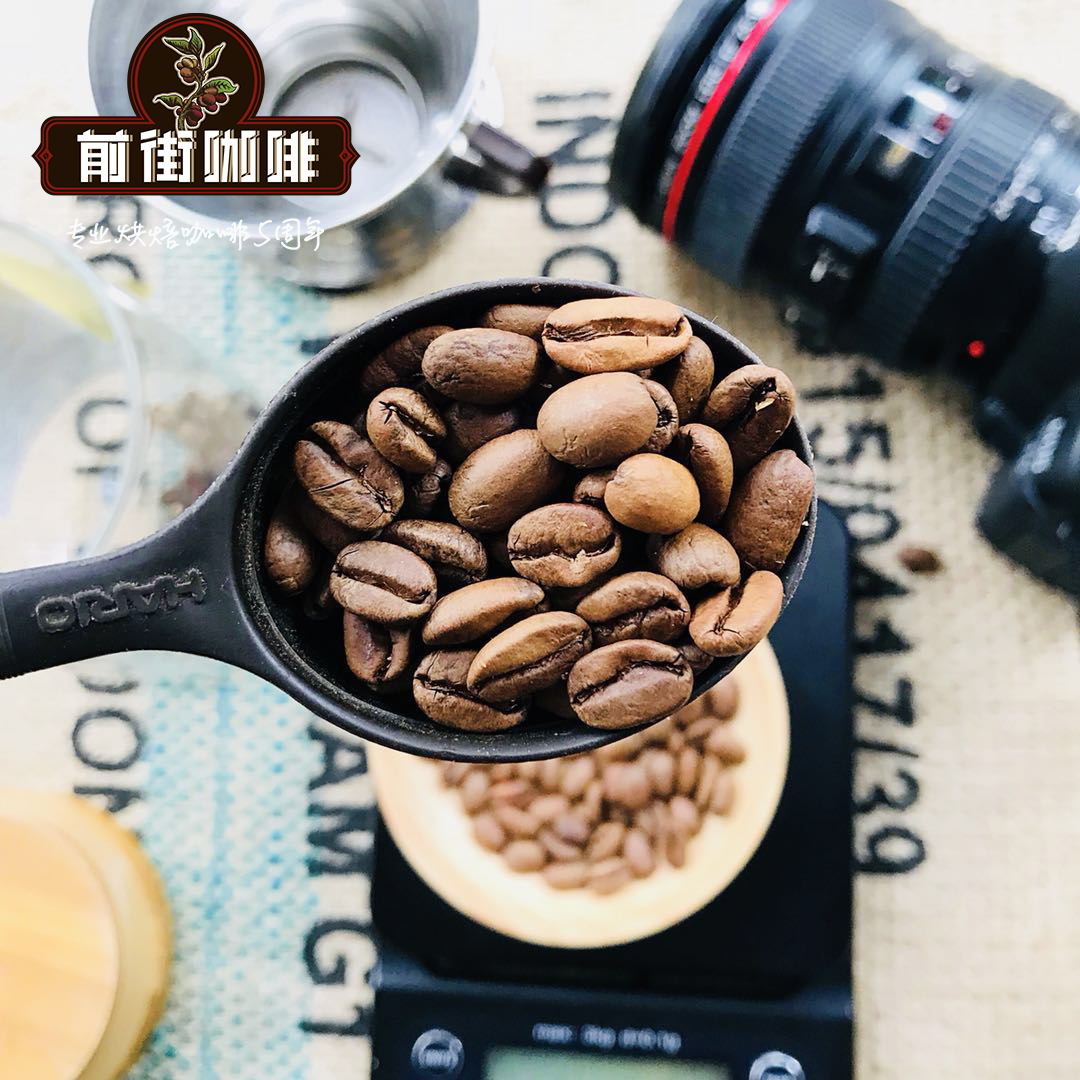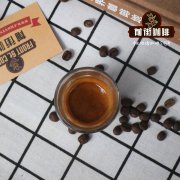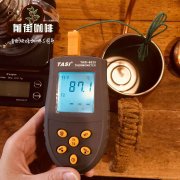Ethiopian Harald Coffee Legend introduction to Ethiopia's well-known coffee brand coffee beans

Professional coffee knowledge exchange more coffee bean information please follow the coffee workshop (Wechat official account cafe_style)
Over the past 20 years, Harald has been nothing more than a faded memory in people's hearts-a legend, an imprint that may not be reproduced. At one time, the unique blueberry flavor of Harald, Ethiopia, was popular with other coffees in the 1980s and 1990s. Harald is the treasure of coffee hunters, so mysterious, so unusual, indescribable, that you can only understand it when you taste it. It is beyond reproach that it is the most impressive coffee of the recent era, which opens the door for many people to taste it and enter the boutique coffee.
Royal's CEO Max has recently listed some useful words about this coffee producing area. Please don't miss the comments at the end of the article. It is important that a person's sense of taste is as sharp as the tingling of a phantom limb.
Rashid Abdullahi, nephew of Mohamed Abdullahi Ogsadey, an O.G.Harar Horse supplier, is in charge of handing over coffee to Royal. His project brought the new tools of the modern coffee trade to this ancient region, full of history and nostalgia, and produced the best flavor of Harald coffee in a generation. Let's confirm a little bit that the message of this Harald is much richer than the grumpy coffee glutton's boasting about the coffee beans of the past.
Harald is a walled city in eastern Ethiopia, an ancient trade center and an important Islamic shrine (at its cultural peak in the 15th and 16th centuries), connecting East Africa and the Arabian Peninsula. To be sure, this is the first time coffee has been tasted by people outside the African continent, including Dhabhani, the elder Sufi who spread coffee to Yemen.
Harald is located too far to the east and is still some way from the Kingdom of Kaffa, where coffee originated in the west, so it is unlikely to be the birthplace of coffee. However, Harald's geographical location and importance as an economic and cultural center made it prominent in the earliest coffee transportation and trade, injecting a sense of historical solemnity into coffee.
❷
Raw bean analysis
By Chris Kornman
This is a strange kind of coffee and raw beans. Its aroma with aromas of sun-dried coffee, cherries and sweet grains is not uncommon among selected Ethiopian sun-treated beans. Some slight color inconsistencies cause it to be rated level 4, which is a low grade in sun-cured boutique coffee. Some quakers beans are produced during baking. The bean shape is small and long, the water activity is stable, dry, and has an astonishingly low density. It won't be an easy-to-bake coffee bean, but it's worth a try.
Drying whole coffee cherries is a traditional coffee treatment in Ethiopia. Whether you call it solarization, drying, fruit drying or cherry drying, this "zero treatment" of coffee after harvest can be traced back to Ethiopia. Today, curry farmers around the world still use this way of processing coffee like raisins, all from here. Throughout Ethiopia, it is still common for small farmers to dry their crops on porches or lawns.
❸
Baking analysis
Do you want a challenge? This batch is very special, and at first I wasn't sure how to bake it. My first step includes two operations using the Ikawa roaster. The Jen baking results are very successful, and my baking results are more complex. You can download two pieces of baking data and try it yourself. Jen's baking curve has a gentle slope and lands softly at the blast, ending at 405F at 5:15. Chirs's baking curve begins with a lower input bean temperature, and the fan speed changes more sharply, reacting over Mena to an extremely high fan speed and a high temperature of 425 degrees Fahrenheit.
The explosion of this baking curve appears very late, nearing the end of Jen baking. The Harald cup baked by Jen has a berry jam flavor and a yeast flavor due to the underdevelopment of post-burst caramelization (PCD). My baked Harald is more delicate, with herbal and drupe flavors.
With Ikawa's baking experience, I continued to use the Probatino roaster and reminded myself to handle it in a mild way (due to the low density of beans), allowing enough time after an explosion to avoid the smell of bread that was underdeveloped.
In the first baking process, I slow down the low temperature of the beans, increase the firepower before the Mena reaction, raise the temperature slightly before the explosion, and use the Scott Rao baking method to slow down the heating rate. As expected, the explosion occurred relatively late, and I continued for more than 2 minutes to stop baking. This is a deep baking method, and you can taste dried berries and chocolate in the cup.
In the second baking, I raised the temperature of the beans and dehydrated the coffee into the Mena reaction. I noticed that the RoR (the rate of temperature rise, the rate of heating of coffee beans) at the initial stage of the Mena reaction was gradually decreasing, so I increased the firepower and lowered it before the explosion, hoping to achieve a considerable amount of PCD (post-burst caramelization) while achieving more shallow baking. The cup test results show obvious flavors of canned peaches, sweet alcoholic fruits and dried grains.
❹
Behmor analysis
Unless otherwise noted, I follow the operating standards of the Behmor roaster. I usually use a 1-pound setting, manual mode (P5), full power, high drum speed to burst. The original post and statistics are read here.
The way the Harald is baked with Behmor is very different from that of Probatino, and the burst time of beans is the earliest of the three tests this week. Harald began to slide energetically towards the explosion, reaching a weightlessness rate of 12.2% after 1:25. The original moisture content of this bean is low, so its 12.2% is more significant than the 12.2% of raw beans with high moisture content, and it does show a slightly scorched taste in the cup test. But if I understand it correctly, this is the style this bean should pursue.
The cup test results show obvious berry and tobacco flavors, as well as an exciting cocoa tail. This classic rustic flavor has a lot to do with one of my operations, which was suggested by Chris to enter the explosion more slowly. This coffee is characterized by its texture and strong chocolate flavor, which should be made as much as possible in roasting (in my humble opinion).
If you know anything about coffee for some time, this classic coffee will probably remind you of Harar Horse. According to everyone, the coffee tasted is full of memories.
❺
Extraction analysis
Although I don't realize the nostalgia that many people hold for this coffee, I have always been passionate about all kinds of interesting new coffee (or new improved varieties). This tanning Harald is definitely an interesting coffee in terms of extraction and taste. Since I missed the golden age of blueberry Harald, I am very excited to have the opportunity to join in the excitement.
As Chirs mentioned earlier, this is an interesting coffee-it doesn't look like a typical Ethiopian water-washed bean, nor does it look like a sun bean. During the cup test, I found that although it is sometimes dominated by herbal flavor after increasing the extraction rate, the sweetness will be more obvious. My solution is to fully soak and use smart cup extraction, so that you can get the flavor of jam while avoiding excessive extraction. The coffee tastes delicious, with outstanding canned peaches, coffee peels, purple grape flavors, and balanced with dates, vanilla and cedar. I am surprised that the extraction time is 4 minutes and the TDs is very low, but I do not think that a higher extraction rate will lead to better cup performance.
This coffee is a tribute to the past, and I decided to try Italian concentrate, too. Based on my experience of making an old-fashioned double concentrate, I used a powder-to-water ratio at 1:15 to produce a thick syrup concentrate with the complexity of cocoa, the sweetness of overripe strawberries, and some caramel and wholemeal flavors to balance. Looking forward to an interesting, fascinating and delicious challenge? This bean from East Harar can fully meet your requirements.
END
Important Notice :
前街咖啡 FrontStreet Coffee has moved to new addredd:
FrontStreet Coffee Address: 315,Donghua East Road,GuangZhou
Tel:020 38364473
- Prev

What are the brands of Ethiopian coffee? is Harald coffee harar coffee good?
Professional coffee knowledge exchange more coffee bean information Please pay attention to Coffee Workshop (Wechat official account cafe_style) Ethiopia is currently the country with the fastest coffee production and development, different production areas not only make coffee different in treatment, the same treatment can also lead to different aroma and taste due to different processing techniques, which often make people misleading. Such as Yegashev.
- Next

Ethiopian coffee variety-Hara mocha coffee introduction Hara sun coffee beans how to drink?
Professional coffee knowledge exchange More coffee bean information Please pay attention to coffee workshop (Weixin Official Accounts cafe_style) Ethiopia is the first country where coffee was discovered. Nowadays, there are still many wild coffees collected and used by farmers in primitive forests. Ethiopia is a poor country with constant drought and civil war, but it is still the most important coffee in terms of coffee quality and yield.
Related
- Does Rose Summer choose Blue, Green or Red? Detailed explanation of Rose Summer Coffee plots and Classification in Panamanian Jade Manor
- What is the difference between the origin, producing area, processing plant, cooperative and manor of coffee beans?
- How fine does the espresso powder fit? how to grind the espresso?
- Sca coffee roasting degree color card coffee roasting degree 8 roasting color values what do you mean?
- The practice of lattes: how to make lattes at home
- Introduction to Indonesian Fine Coffee beans-- Java Coffee producing area of Indonesian Arabica Coffee
- How much will the flavor of light and medium roasted rose summer be expressed? What baking level is rose summer suitable for?
- Introduction to the characteristics of washing, sun-drying or wet-planing coffee commonly used in Mantenin, Indonesia
- Price characteristics of Arabica Coffee Bean Starbucks introduction to Manning Coffee Bean Taste producing area Variety Manor
- What is the authentic Yega flavor? What are the flavor characteristics of the really excellent Yejasuffi coffee beans?

